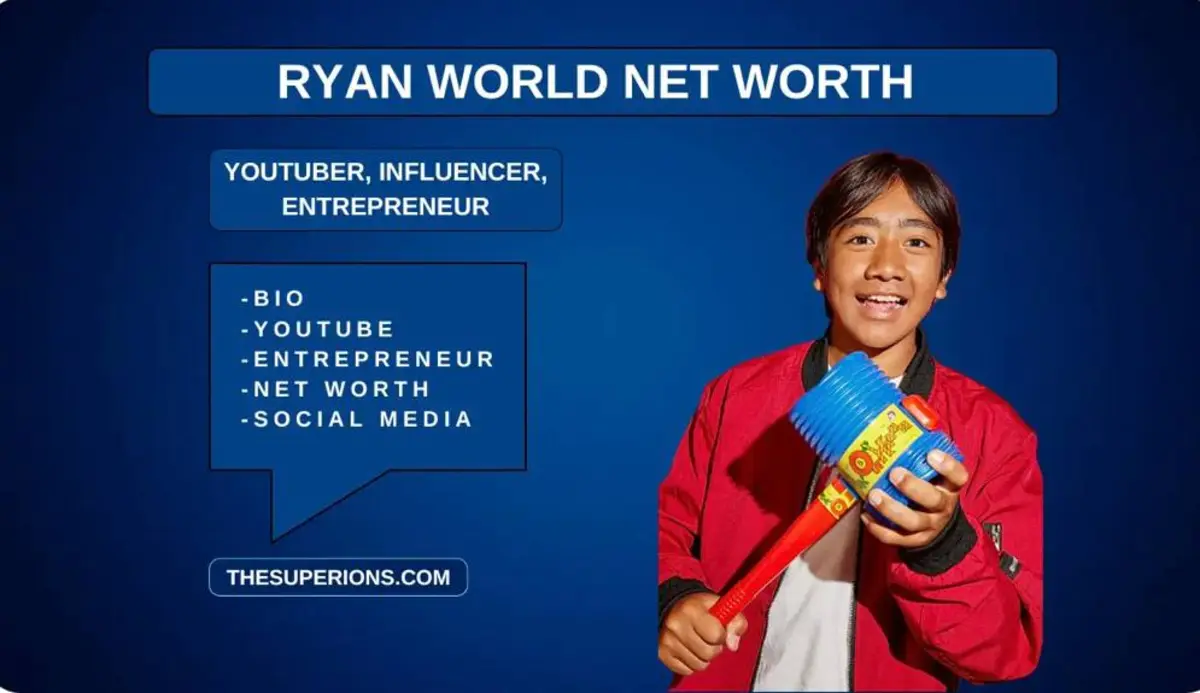George Takei Net Worth Unveiling His Financial Success


Ever wondered just how much wealth someone can build by boldly going where no one has gone before—and then building an even bigger audience online?
The story behind George Takei’s net worth is anything but simple math or generic celebrity headlines.
There’s curiosity for fans—how did a pop culture icon from the original Star Trek series transform not only his career trajectory but also become a digital-era influencer with millions of followers?
And let’s be real—the question isn’t just “How rich is George Takei?” It’s about what it takes to maintain relevance (and income) across generations. For anyone feeling stuck in their field or wondering if a pivot can really pay off, Takei’s journey might be proof that adaptability trumps all.
Let’s dig into exactly how George Takei built his estimated $14 million–$20 million fortune as of late 2024—not just through sci-fi stardom, but by reading the currents of pop culture and tech alike.
How George Takei’s Net Worth Evolved Over Time
All of which is to say: estimating celebrity fortunes always comes with a caveat. Still, current figures suggest George Takei’s net worth sits comfortably between $14 million and $20 million USD according to cross-referenced reports from sources like Celebrity Net Worth and Forbes. What stands out here isn’t just the number—it’s the sequence of milestones that got him there.
Let’s sketch out some key inflection points:
- Early TV roles brought modest paydays—but set up later opportunities.
- The original Star Trek series provided initial recognition; true earnings came after syndication rights and franchise royalties kicked in years down the line.
- Takei capitalized on every resurgence—Star Trek movies, convention circuits, recurring guest spots on shows like Heroes—all adding layers to his earning power.
- A strategic leap into book deals (with bestsellers such as “To The Stars”) plus lucrative speaking gigs broadened his revenue mix beyond acting alone.
- Social media wasn’t just for fun: Facebook sponsorships and brand partnerships turned viral posts into reliable new streams by the mid-2010s onward.
So while we see many actors fade after their prime role fades from screens, Takei’s continued hustle underscores why those numbers don’t stand still—they evolve with each decade he reinvents himself.
The Early Career And The Star Trek Factor In Building Wealth
Before memes made you money or conventions paid six-figure appearance fees, breaking into Hollywood meant grinding through bit parts and hoping lightning would strike. That was reality for young George Takei as he tried to crack an industry offering few substantial roles for Asian-American talent.
The funny thing about this period? Every minor part—no matter how small—meant connections that paved the way to something bigger. By age twenty-one, he had landed voice work dubbing Japanese films for American audiences—a far cry from iconic status but crucial training nonetheless.
Landing Hikaru Sulu on Star Trek proved transformative in ways few could have foreseen at first taping. Initial salaries weren’t headline-worthy; however:
- Syndication changed everything: reruns delivered long-tail royalty checks well beyond show cancellation.
The upshot: sudden pop-culture immortality not only created direct residuals from Paramount but opened doors everywhere else—from comic-cons to animated spin-offs.
Of course, it’s easy now to overlook those early years when scripts were scarce and public acceptance was rarer still. But every modest check cashed back then planted seeds that sprouted later—with interest—as new business models emerged around classic fandom.
A Modern Reinvention: Digital Influence And Beyond Acting Roles
Doubtless there are plenty who remember Takei only as Sulu—or maybe caught glimpses during his runs on shows like Heroes or The Simpsons.
But here’s where things get interesting: rather than rely solely on nostalgia-fueled projects or rerun royalties forevermore, George mastered modern relevance by leveraging social platforms earlier than most Hollywood veterans dared try.
| Income Stream | Description & Impact |
|---|---|
| Facebook Sponsorships & Viral Posts | Brought sponsored deals; large audience = higher rates per post |
| Book Sales & Public Speaking | Bestseller lists + high-demand lectures expanded reach well past core fanbase |
This transition wasn’t accidental—it was built upon carefully tending personal branding alongside broad activism work (from LGBTQ+ advocacy to immigration reform).
In essence? Each era demanded different tools—and by consistently updating his toolkit (be it sci-fi scripts or trending hashtags), George ensured both cultural impact and financial growth ran parallel courses across decades.
Laying The Groundwork: How Early Experiences Shaped Financial Success
If you’re looking for one silver bullet behind george takei net worth soaring above so many peers who faded away—it starts right back at childhood roots shaped by hardship.
Born in Los Angeles before World War II broke out, George spent formative years in US internment camps due simply to ancestry—a chapter he speaks about candidly today when addressing resilience and opportunity lost versus seized.
- This experience didn’t provide money—but it forged lifelong drive not easily matched among peers untested by systemic adversity.
Tellingly enough,this Forbes profile charts how education became non-negotiable currency: attending UCLA led directly into acting school auditions — against typecasting odds rampant at mid-century Hollywood studios.
As much as family sacrifice paved certain paths toward university degrees, the big break almost never happens without sheer tenacity meeting chance encounters. No surprise then that landing supporting film credits—even if anonymous at first—was treated less like luck than repayment after surviving chaos wrought earlier in life.
Catching A Break In Showbiz – From Minor Roles To Mainstream Recognition
- Dubbing Japanese monster flicks gave practical know-how about Hollywood logistics — low glamor but invaluable exposure inside studio machinery.
Soon he’d win blink-and-you-miss-it walk-ons across westerns before scoring more prominent features throughout the ’60s (including John Wayne vehicle “The Green Berets”).
Each incremental gig layered two things:
- Name visibility within casting circles—a must-have before breakout auditions arrived.
- A resume thick enough producers couldn’t ignore when science fiction began seeking fresh faces willing to take creative risks outside norm-core TV fare.
This intersection set up pivotal moments soon after…because sometimes steady wins actually do position you right at flashpoint crossroads when genre revolutions hit network primetime grids.
Star Trek didn’t arrive gift-wrapped atop early struggles; it grew directly out of them—and cemented financial momentum impossible without groundwork laid patiently year after difficult year prior.
Now let’s zoom in closer…
The Real Value Of Star Trek On Long-Term Wealth Trajectory
The upshot? Most outsiders imagine instant riches flow once you’re cast aboard an Enterprise bridge—but franchise economics rarely work so simply.
Yes, ‘Star Trek’ pushed visibility sky-high overnight,
but actual salary structures during its run hovered closer to working actor rates than megastar windfalls—
true game-changers showed up via:
- Syndication royalties fueling passive income over multiple decades
- Pop culture cachet leading straight into international appearances/fan events/merch licensing splits
- Permanent seat at table whenever related reboots or anniversary specials revived old contracts under improved terms
It all adds up: a single breakthrough multiplied opportunities exponentially, widening every avenue available after mainstream breakthrough landed thanks largely
to foundations built during lean pre-stardom chapters.So if anyone ever wonders whether sticking through setbacks pays off financially?
Ask yourself how one man’s refusal to play safe rewrote both bank statements—and entire genres—for half a century running.Income Streams and Business Ventures: How George Takei Net Worth Took Shape
Ever wonder how a name from classic sci-fi TV built not just an enduring legacy, but a serious bank balance? George Takei’s net worth isn’t just about those iconic “warp speed” scenes. The real question is—what income streams power his financial engine in 2024?
Acting and Voice-Over Work Revenue: Beyond the Starship Bridge
It’s tempting to picture Takei’s fortune as all about Star Trek, but that’s only part of the story. Sure, Hikaru Sulu gave him an initial boost, yet original cast salaries were modest by today’s standards. What changed things? Royalties from reruns, movie appearances, and (more than you might guess) regular invitations to conventions where fans line up for autographs.
But Takei didn’t just stick to live-action work. He found a new rhythm lending his voice to animated series and blockbuster video games—a move that quietly padded his bottom line year after year. Take roles in shows like The Simpsons, Avatar: The Last Airbender, or recent anime dubs; each gig paid industry-standard rates plus potential residuals. The upshot: steady entertainment income forms the bedrock of his wealth—consistent even as trends shift.
Book Publishing and Speaking Engagements: Turning Stories into Assets
What if your life was so wild it could fill bestsellers? For Takei, this wasn’t hypothetical—it was business sense. His autobiography To the Stars hit the New York Times list, fueling both cash flow and credibility in literary circles. And he didn’t stop at memoirs; graphic novels like They Called Us Enemy tapped into new audiences hungry for stories on resilience.
But publishing is just one lane. Over the past decade, colleges, nonprofits, and tech conferences have booked Takei as a keynote speaker—and these gigs aren’t volunteer work. High-profile speeches can command five-figure appearance fees per event. So every book tour or panel discussion doubles as both message-spreading and money-making opportunity.
Social Media Influence and Digital Presence: From Fan Pages to Cash Flow
Here’s something even diehard Trekkies might miss: In terms of reach, George Takei is less “cult icon” than social media powerhouse. With millions following him across Facebook, Twitter (now X), Instagram, and YouTube, brands recognize his ability to drive engagement—and pay accordingly for sponsored posts or viral campaigns.
The funny thing about digital stardom? It opens doors traditional Hollywood rarely could—like online-only partnerships or influencer-exclusive licensing deals.
Brand Partnerships and Endorsements: Monetizing Celebrity with Precision
When you’ve got decades of goodwill (and pop-culture relevance), brands start calling—with contracts in hand. Think insurance ads using that signature baritone or tech companies leveraging nostalgia for “futuristic” marketing spots.
All of which is to say: While public numbers are closely guarded by NDAs, branded content has become an increasingly significant revenue stream since 2010—not just padding George Takei’s net worth but diversifying how it grows beyond showbiz cycles.
Financial Strategy and Investment Approach Shaping George Takei Net Worth Growth
Real Estate Investments: Building Stability Offscreen
Let’s cut through rumors—real estate remains one of Hollywood’s safest bets for turning royalty checks into lasting wealth. While specific addresses aren’t widely publicized (privacy matters when you’re famous), credible sources confirm that property holdings play a key role in underpinning George Takei’s financial security.
Take Los Angeles as an example—the city where celebrity home values routinely outpace stocks or savings accounts over time. By buying early during career peaks—or trading up strategically—Takei likely benefited from long-term appreciation without needing Wall Street wizardry.
This approach delivers two upsides:
- Tangible assets hedge against market volatility.
- Pride-of-place investments create passive rental income potential down the road.
Business Ventures and Partnerships: Leveraging Legacy Into New Arenas
The days when actors stayed in their lanes are long gone—and few have embraced this more thoroughly than Takei himself.
Rather than banking solely on performance royalties or convention circuits,
he has explored co-producing projects tied to social justice,
advised tech startups seeking credibility with older audiences,
and engaged selectively with merchandise ventures that align with personal branding.The lesson here?
Diversification isn’t just about stock picks;
it means finding ways your reputation can generate returns outside traditional Hollywood circles
– often yielding equity stakes rather than single payouts.For instance,
his involvement with LGBTQ+ rights organizations led not only to speaking fees
but also profit-sharing opportunities in awareness campaigns funded by corporate partners.This blurs lines between activism,
investment,
and entrepreneurship – exactly what keeps high-net-worth portfolios resilient amid shifting cultural winds.Portfolio Diversification Strategies: Not All Eggs On One Starship
No matter how deep your fandom runs,
the smart play is spreading risk – especially if markets turn choppy.By blending real estate gains,
business equity positions,
book royalties,
digital sponsorships,
and good old-fashioned residual checks,George Takei ensures no single downturn wrecks decades of progress.
It may sound simple,
but history shows most celebrities trip up here –
whereas methodical diversification underpins why estimates peg his net worth so consistently high compared with peers who put fame before finance.How Cultural Impact Supercharges George Takei Net Worth and Brand Value
Why do some actors fade out, while others become household names with bank accounts to match? That’s the upshot when you look at George Takei net worth. It’s not just about sci-fi reruns or social media followers. The real story is how his activism, advocacy, and uncanny cross-generational pull turbocharged his brand value – and ultimately, his financial standing.
Social Activism: The Secret Engine of Brand Worth?
Let’s be honest – it’s tough to put a dollar sign on cultural capital. But for Takei, every time he spoke out against injustice (from WWII internment camps to anti-Asian hate), it cemented trust. That matters in today’s economy of attention.
Here’s what happens:
- Authenticity builds loyalty: When George talked about internment camps, people didn’t see a celebrity – they saw someone who lived history. That emotional connection? It keeps fans invested across decades.
- Sponsors follow relevance: Companies want faces that resonate. Brands know social activism equals engagement; engagement equals sales. So when George stands up for something bigger than himself, opportunities line up.
The problem is, most celebrities avoid controversy; George runs toward it. All of which is to say: this isn’t “nice guy” PR fluff – it’s the foundation for why he commands lucrative deals long after Star Trek left the airwaves.
LGBTQ+ Advocacy Isn’t Just Morality—It Shifts Markets
Back in the day, coming out could wreck your career in Hollywood. For George Takei? The opposite happened.
He became a symbol:
- Mainstream momentum: By owning his identity publicly (well before corporate Pride Month bandwagons), he pulled LGBTQ+ issues into everyday conversation—and brands noticed.
- Market expansion: His fearless visibility helped major studios tap new audiences craving genuine representation. Endorsements followed because advertisers want authenticity AND access to growing markets.
The funny thing about this shift—it doesn’t just boost cause-driven clout; it turns advocacy into asset value that lives on merchandise shelves and streaming queues worldwide.
The Cross-Generational Pull Effect on Net Worth
Ask any fan under 30 who first heard of Sulu—not from reruns but viral memes or TikToks featuring George riffing on pop culture—they’ll tell you: relevance isn’t inherited; it’s earned.
That blend of nostalgia for boomers and digital savvy for Gen Z expands his revenue runway far beyond convention floors or book tours.
So when investors talk “brand longevity,” they’re really talking about what Takei built—multi-decade audience equity that multiplies George Takei net worth.The Modern Moves Powering George Takei Net Worth Growth Trajectory
People wonder: How does someone whose prime-time fame started fifty years ago still rack up millions today? Here’s where recent projects and online mastery flip the old playbook on its head—and why there might be even more upside ahead for George Takei net worth.
Recent Projects Driving Financial Momentum
A lot has changed since Star Trek—but not all change is obvious unless you’re paying attention:
This decade brought fresh wins:
- Bestselling books: His graphic memoir “They Called Us Enemy” didn’t just move units—it landed him back on bestseller lists and speaking circuits coast-to-coast.
- Mainstream TV/film cameos: Roles in shows like “The Terror” and animated voiceovers aren’t vanity gigs—they deliver both upfront checks and ongoing royalties.
- Theatre producer credits: Getting behind Broadway productions lets him cash in beyond acting—and build creative control into future income streams.
This diversification shields against downturns (think convention cancellations during COVID) while opening doors that pure nostalgia can never unlock alone.
The Digital Monetization Blueprint Most Celebs Miss
Take one look at Facebook—millions follow him daily. But here’s what makes Takei different:
Instead of chasing fleeting trends or meme-of-the-week formats, he creates communities around sharp wit, personal storytelling, and unfiltered commentary.
This pays off in several ways:
- Sponsorship deals calibrated for high-trust environments (his Facebook page gets seven figures of engagement monthly)
- E-commerce tie-ins—limited-run merch drops leverage inside jokes only true fans get
- Paid video content—from virtual conventions to direct-to-audience Q&As, bypassing gatekeepers entirely
All of which is to say—the platform powers the pipeline now as much as screen roles ever did.
The Road Ahead: What Could Push George Takei Net Worth Even Higher?
No crystal ball here—but a few things are clear if we’re tracking brand assets instead of one-hit wonders:
If current trends hold—expanded international licensing deals (especially as global streaming explodes), deeper partnerships with legacy franchises hungry for credible voices (think next-gen Star Trek reboots)—and maybe even another viral moment driven by unapologetic truth-telling… these could compound growth well past $20 million USD.
To some extent—that’s the blueprint every working actor wants but almost none achieve.
For now? George Takei shows what happens when you make cultural impact pay actual dividends—influence turned tangible wealth.
And that puts him in rare company among entertainment icons whose best days may still lie ahead.






